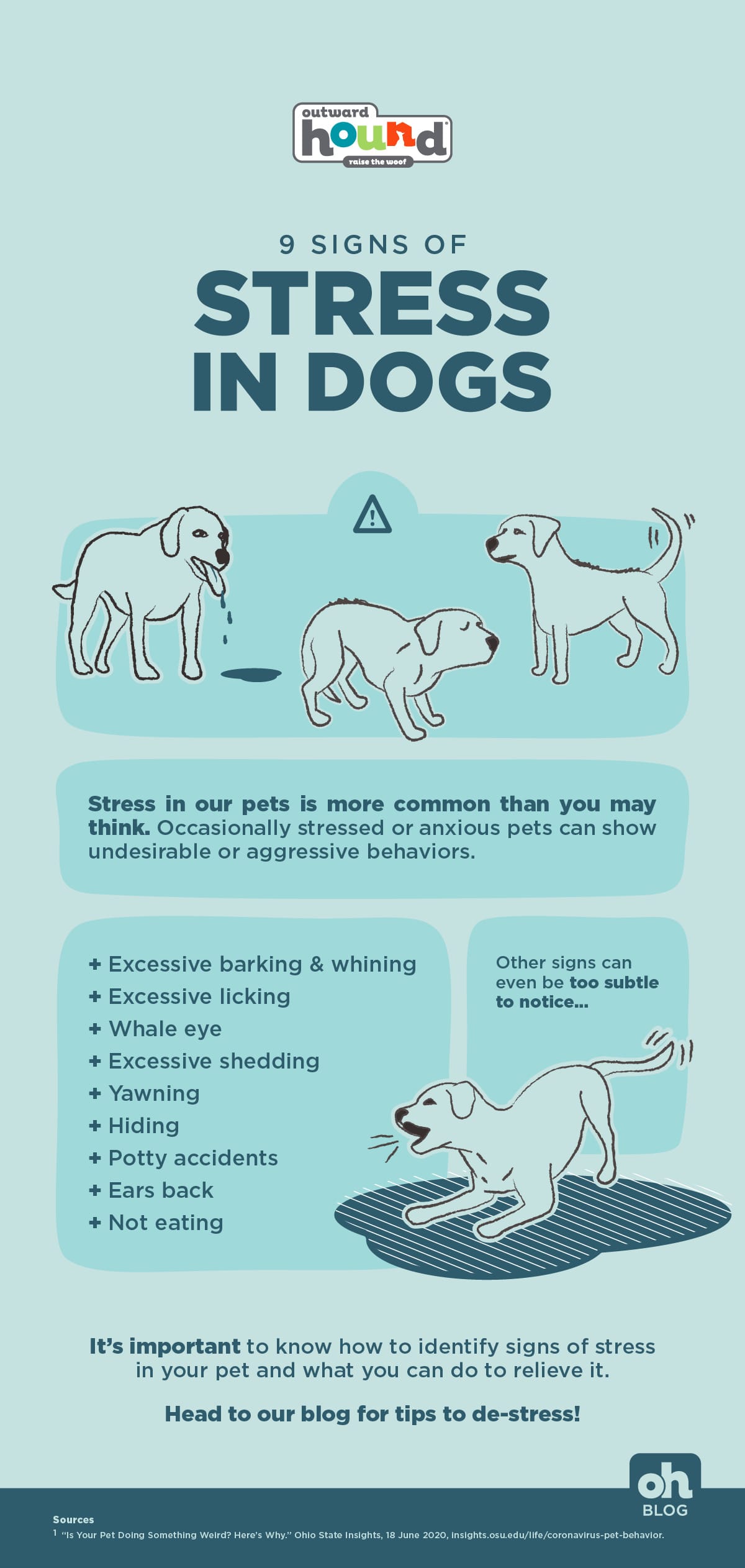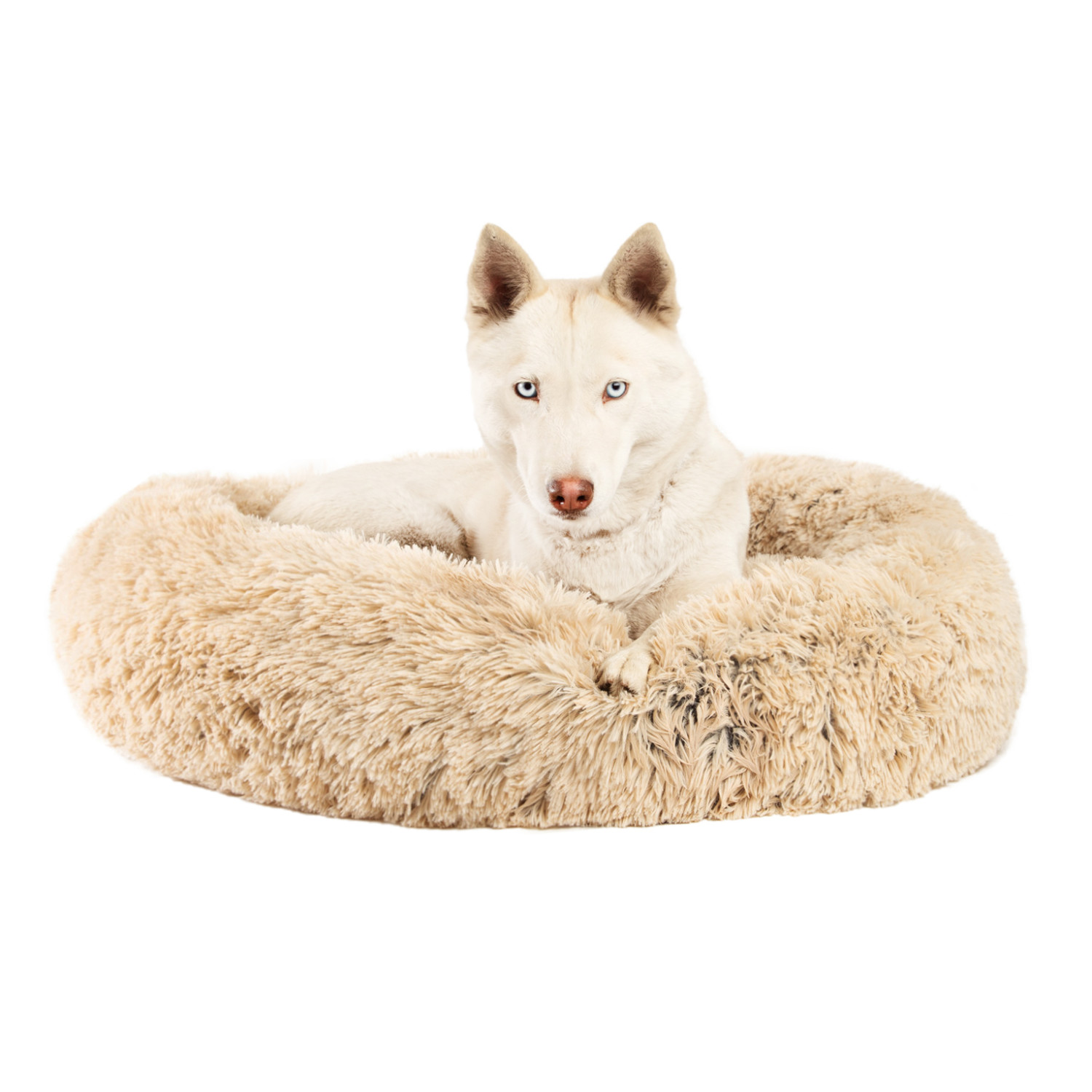Another summer is on the way, and in many parts of the country, the thunderstorm season has already begun. If you have a dog with storm anxiety, it can be a stressful season.
Many dog owners know the drill — the thunder starts rolling and your dog starts panting, yawning, and lip-licking to show his level of anxiety. He also puts his ears back and tucks his tail under, but what’s behind your storm-phobic dog’s anxiety? Why are dogs afraid of storms?
Why Do Dogs Fear Storms?
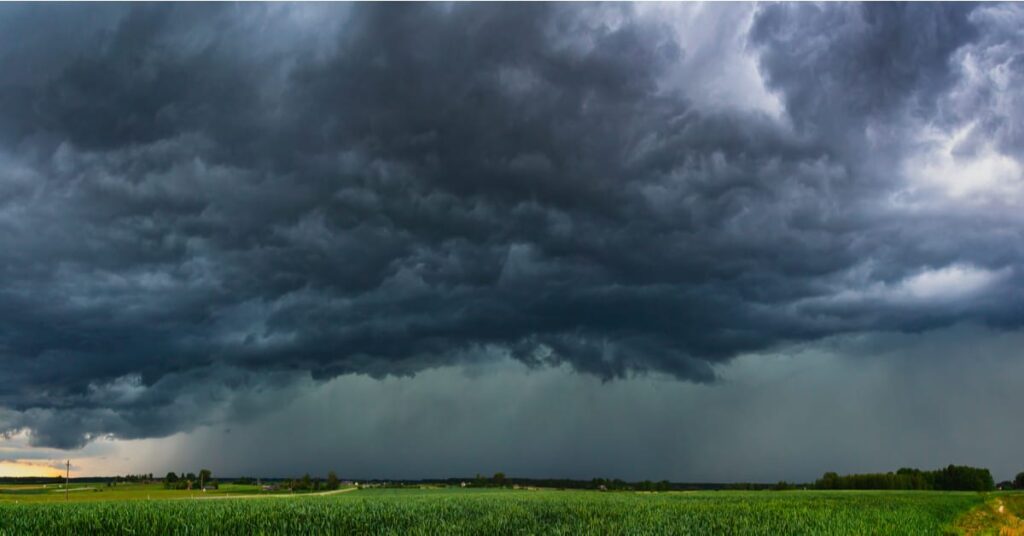
There are several reasons why dogs are afraid of storms. First of all, dogs can sense the dropping barometric pressure that accompanies an approaching thunderstorm. Of course, those air pressure changes also come along with darker skies, wind, and loud noise when the thunder rolls.
Many dogs have a noise phobia, and the noise alone can cause them to become uncomfortable. What’s more, many storms often have a lot of different noises that can produce a fearful dog.
Aside from loud sounds, many storms also come with low-frequency sounds that cause even more anxiety.
That noise aversion in your best friend can cause him to run and hide when the first rumbles begin. He might even show his anxiety by engaging in destructive behavior. Some dogs have even been known to try and burrow into the wall!
Of course, your dog learns over time that the sound of thunder, the smells, and the barometric pressure changes mean trouble is on the way. He might start getting nervous well before the storm actually arrives, and when he does, you’ll start seeing the fearful behavior.
It’s Electrifying!
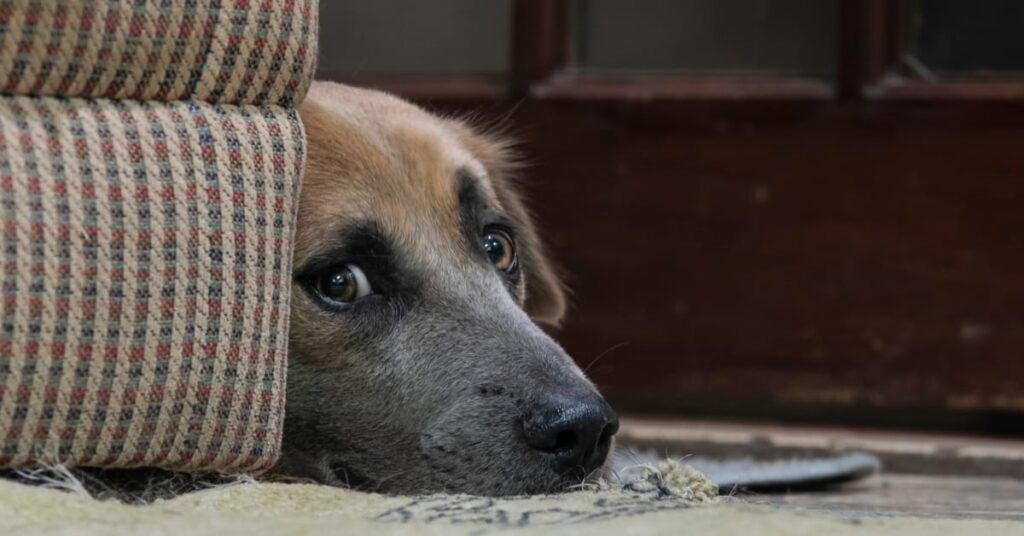
Another reason dogs fear storms is the buildup of static electricity in their fur.
As Nicholas Dodman, a veterinary behaviorist at Tufts University and the chief scientific officer at the Center for Canine Behavior Studies, notes, large dog breeds and those with long hair or a double coat easily build up static electricity.
That means they not only have to fear the noise and drop in barometric pressure that comes with a storm, but they also have to fear being shocked. This is the same kind of shock that you experience when you are wearing certain types of clothing like a sweater or when you walk across some kinds of carpets, and then, you touch something metal. Zap!
It can be quite painful, and it also acts as a negative reinforcement stimulus for a dog that might already be anxious about an approaching storm. Your dog usually receives static shocks when he touches his sensitive nose to something metal. I don’t blame him for being afraid!
Some dog breeds, like border collies and Australian shepherds, are more likely to have a storm phobia, which indicates there may be a genetic predisposition that can cause an anxious dog at the first sound of thunder. Additionally, if your dog has separation anxiety, he’s also more likely to experience storm phobia.
What are the Signs of Storm Anxiety?
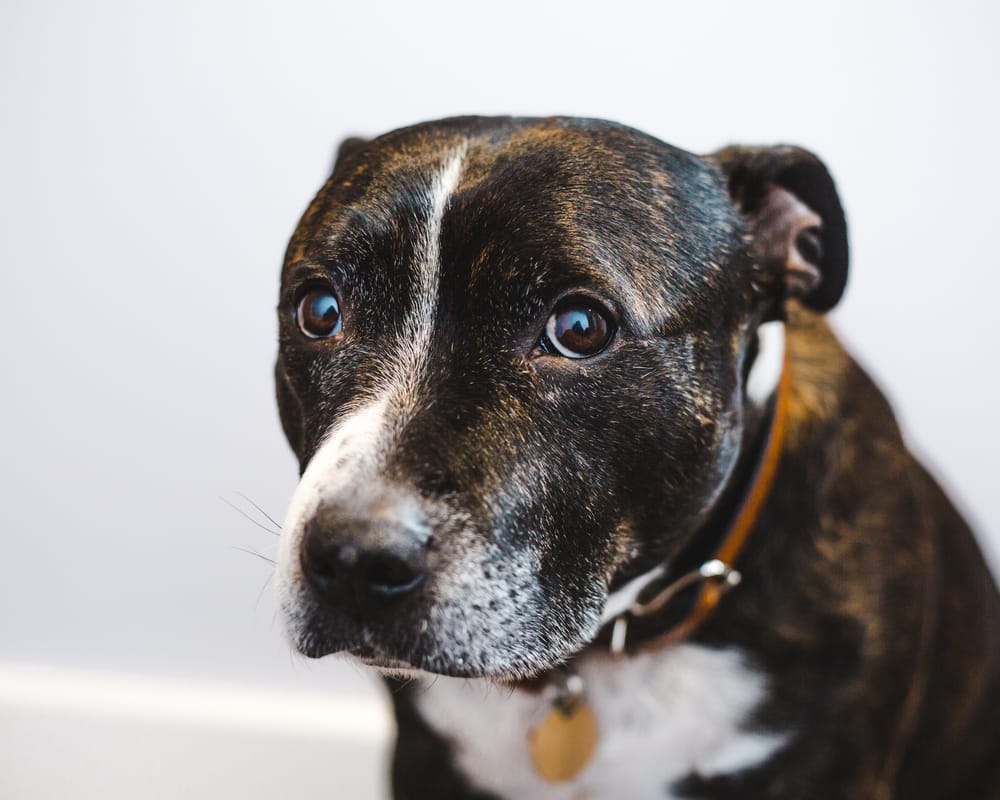
Even well before a storm arrives, you may notice the first signs of storm anxiety. Your dog might begin trembling or shaking, and as soon as the first rumbles of thunder begin, he might start pacing back and forth or looking for a place to hide.
Then the panting, lip-licking, and yawning start as his fear increases. Anytime you see your dog panting when he has not been exercising or out in the heat, that means he’s feeling anxious.
As his anxiety increases, your dog might start barking and becoming increasingly panicked. It’s truly heartbreaking to watch, and it’s hard to know what to do, but there are some things that can help calm your dog down. Let’s take a look at some helpful strategies.
What Can Dog Owners Do to Help a Dog Afraid of Thunderstorms?
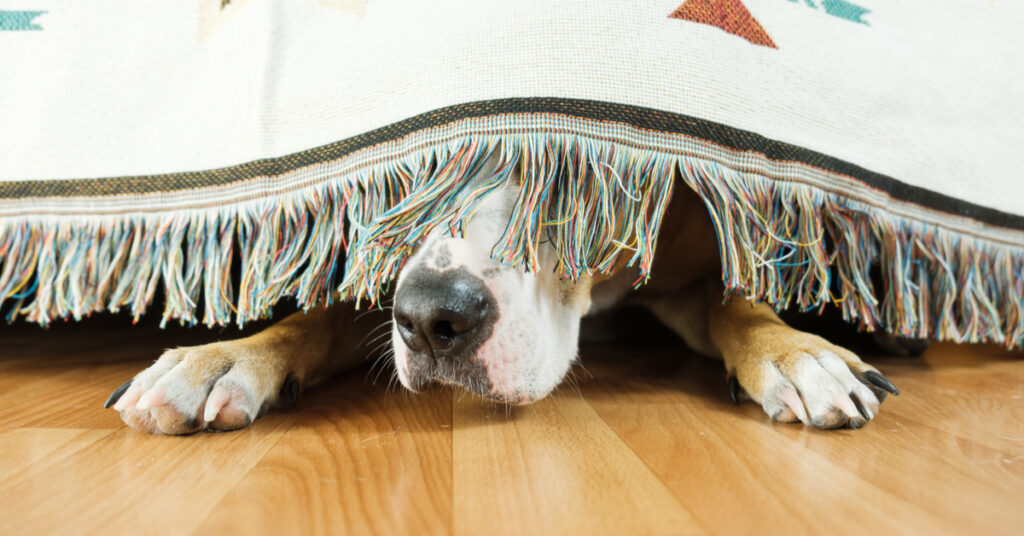
There are several things you can do to help your dog deal with his fear of thunderstorms.
The first thing you want to notice is where he tends to go when the storms arrive. That’s his safe place, and when you know where that is, you can make it comfortable so he can go lay down when he’s afraid. You might put a nice, comfortable, and calming bed in there for him with his favorite treats and an adaptil diffuser that emits dog-appeasing pheromones (DAP).
If possible, you want to make that safe place as sound-proof as possible. You could use something like white noise, or some other kind of background noise, to drown out the sounds of the storm.
Another thing that helps is to provide some type of swaddling material that can ‘hug’ your dog and make him feel more comfortable. One example is the Anxiety Wrap or Thundershirt. It applies constant, gentle pressure to help relieve your dog’s anxiety.
Dogs with thunderstorm phobias have responded well to this type of calming pressure. It’s a safe, effective treatment for storm phobias.
If your dog is exhibiting extreme behavior or destructiveness during storms, you can also consult your veterinarian. There are some anti-anxiety medications that are effective in reducing your dog’s anxiety. While you might not be thrilled about giving your best buddy a pill, anti-anxiety medication can really improve his quality of life.
Functional Calming Support Jerky Bites Dog Treats, Turquoise
$16.49 $12.99
Wholesome Pride Functional Calming Support Jerky Bites support everyday stress relief for dogs that get environmentally-induced stress from traveling, hospitalizations, moving, or other situations that may cause anxiousness. Active ingredients like L-Theanine, chamomille, and passion flower work to help keep your pet calm and relaxed in stressful situations. Our turkey recipe calming dog treats are made…
What About Behavioral Modification During Storm Season?

While anti-anxiety medication can help in a pinch, you really want to address the underlying problem. There are some very effective behavioral modification techniques that help deal with your dog’s anxieties during a storm.
One of the most effective behavior modification techniques is counterconditioning. This involves helping your dog engage in positive behaviors rather than fearful ones. For example, you might teach your dog to sit when he hears thunder, and when he does, you give some positive reinforcement like a treat.
That can work very well, but sometimes, his fear makes it difficult for him to listen and obey. Even though he’s a veritable vacuum cleaner in other situations, he also might not be interested in a treat when he’s that scared.
In those cases, desensitization is another good option. This requires that you expose your anxious dog to what is causing the fear a little at a time. You comfort and reward him with positive reinforcement for withstanding the stimuli that normally produce a fearful response. Over time, you increase his exposure to the anxiety-producing stimuli and continue to reward his good behavior.
This is a great option, but given the complex factors that cause your dog’s fear of thunderstorms, it can be hard to reproduce those under controlled conditions.
Still, you can focus your dog’s attention on this kind of training as a thunderstorm approaches, and by doing so, you increase the time between the first signs of a storm and your dog’s need to go to his safe place.
These kinds of behavioral modification techniques are best initiated when your dog is young, but they can still work with older dogs. With patience and compassion, your dog will gradually be able to withstand the fearful stimuli associated with an approaching storm for longer and longer periods of time.
The Original Calming Donut Shag Cat & Dog Bed
$59.99 $30.00
Give your pet more than just a dog bed! Best Friend’s by Sheri is the original creator of the most popular dog bed that has surfaced the internet in recent years: The Calming Donut Dog Bed. This innovative cuddler shag design provides better sleep, supports joints, and offers a calming, self-warming effect. The donut cuddler is carefully crafted with durable, vegan nylon and filled with AirLoft fibers,…
Why Are Dogs Afraid of Storms? Final Thoughts
Anytime you witness your dog in a state of panic, you feel like you would do anything to relieve his anxiety. It’s very common for dogs to experience thunderstorm phobias given the changes in air pressure, the static electricity buildup, and the loud noises that accompany them. Luckily there are things you can do to alleviate your best friend’s anxiety.
Giving your dog a safe place to go with a calming dog bed along with a comforting anxiety wrap is the first step in helping him feel less fearful.
If his fear is too great, there are always anti-anxiety medications your vet can prescribe that will help him feel calmer. White noise or other types of background noise can also help distract him from the approaching storm.
The ultimate goal, however, is behavioral modification using positive reinforcement and counterconditioning either alone or in combination with desensitization techniques that can modify his response to storms. Of course, since many people are also storm phobic, you might just curl up with him in his safe place and snuggle until the storm passes!
